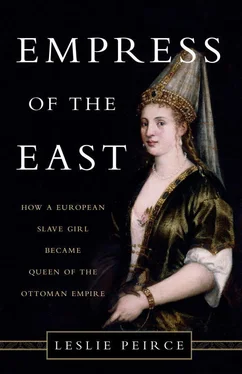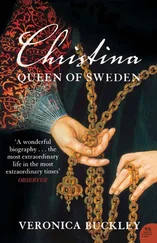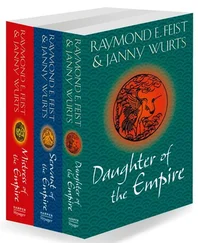All this enabled the Seljuks to blend Turkish ideals of sovereignty with the classic kingly virtues of heroism, justice, and magnanimity celebrated in the region since antiquity. When, two centuries later, the Mongols entered Iran (one of the four sectors of Chinggis Khan’s empire), they too eventually made the same accommodation between sovereign authority and indigenous heritage. The Ottomans would do the same, cherry-picking elements of the Roman and Byzantine imperial pasts to add to the playbook they inherited from the east. As for Roxelana, she would manage her career with a quintessentially Ottoman approach, utilizing now this, now that tradition.
THE OTTOMAN STYLE of governing owed a particular debt to Seljuk history. Popular tales of the dynasty’s beginnings recounted the arrival in northeastern Anatolia of one Ertuğrul, a Turkish nomad chieftain who had come from the east along with “four hundred tents” under his command. [8] Neşri, Cihân-Nümâ , 1:32–33.
Ertuğrul would go on to be remembered as the progenitor of the long-lived Ottoman ruling house. His son Osman, a local warlord who died in 1324, is counted as the first of thirty-seven sultans, the last of whose career ended with the demise of the empire in 1922.
Ertuğrul’s mythic journey took him all the way to northwestern Anatolia, not far from either the Aegean Sea or Constantinople, capital of the Byzantine empire. This meant passing through the lands of the Seljuks of Anatolia, a branch of the original Seljuk dynasty who had moved westward into the extensive Anatolian peninsula and there established a kingdom that outlived its parent state. A popular variant of the story recounting Ertuğrul’s arrival in what would become the Ottoman homeland features a direct tie between the Anatolian Seljuks and the birth of the empire: Ertuğrul joins the service of the Anatolian Seljuk sultan and receives as a reward the small domain from which his descendants would build a world empire.
Regardless of whether or not this particular legend—a story of migration—is true, large numbers of Turks did move westward, from the late eleventh century onward, rendering Anatolia increasingly Turkish and Muslim. The tale of Ertuğrul and the four hundred families is suggestive of the surge of many thousands who fled from the onslaught of the Mongols into the Middle East in the mid-thirteenth century.
One aspect of the Ottomans’ heritage, however, probably owed more to these newcomers from the east than to the Seljuks, who over time had assimilated to the sedate social habits of the Middle East. This was the public prominence of women. When the famous Moroccan world traveler Ibn Battuta visited the several new Turkish principalities springing up in western Anatolia, he remarked that women as well as men came out to hail him as he entered their towns and cities. This was clearly a habit he had not observed as he traveled in the old Muslim lands, from Morocco across North Africa to Egypt and then northward through the Levant.
Ibn Battuta provides us with a touchstone for the long and shifting history of Ottoman royal consorts and Roxelana’s pivotal place within it. He would learn firsthand in his northern travels that high-ranking women among the Turks and the Tatars might command public authority. When in 1331 he reached Nicea, a formerly Byzantine city recently conquered by Osman’s son Orhan, it was one of the latter’s wives, Nilufer, who welcomed the distinguished traveler. She was in charge of the soldiers stationed in Nicea while Orhan, whom Ibn Battuta called the richest of the Turkish leaders, was away on a tour of his fortresses. Of his audience with Nilufer, whom Ibn Battuta describes as “a pious and excellent woman,” he says, “she treated me honorably, gave me hospitality, and sent gifts.” [9] Ibn Battuta, Travels , 2:454.
Likewise, when the traveler continued on across the Black Sea to the lands of the Golden Horde Mongols, royal women, some of whom commanded their own encampments, entertained him lavishly.
Over time, however, the Ottomans, like the Seljuks, adopted more conservative social habits. Females of notable families began to mark their status by restricting their movements in public and employing servants to do their bidding. Men too practiced a studied aloofness, albeit to a lesser degree than their wives, with the prominent and the wealthy dispatching underlings to manage their affairs and receiving petitioners in their residences. First among Ottoman householders, the dynasty took the lead in this practice, with the effect that the sultan’s select appearances—attending Friday prayers, marching out of the capital on campaign—drew crowds of onlookers. The Ottomans were becoming expert at exploiting the politics of spatial manipulation.
These developments had consequences when it came to choosing ideal mothers of princes. During the first century, when the nascent Ottoman enterprise needed allies, princesses of neighboring dynasties, some of them Christian, made good wives and mothers. But when the sultans began to send their sons, and with them their mothers, to train in the provinces, foreign princesses were unlikely to relish leaving the Ottoman capital for distant and less cosmopolitan towns. It was also becoming clear, as the Ottomans became more of a threat to their neighbors, that a foreign princess’s loyalty might rest more with her natal family than with her Ottoman son. So by 1400 or thereabouts, the sultans began to look to slave concubines to assume the risky job of political motherhood.
It took the Ottoman populace a long while to discard the assumption that the mothers of princes and princesses were all royally born. This reluctance, present even today, helps to explain why legend has long claimed Suleyman’s mother Hafsa to be a Giray Tatar princess. Hafsa may well have hailed from the northern Black Sea region or even been a gift of the Tatar khan to the Ottoman court, but she was in fact a captive convert of modest origins, like virtually every woman in the imperial harem at the time when she entered it, probably the early 1490s. [10] Uluçay, Padişahların kadınları , 30–31.
The tenacious story of Hafsa’s royal Tatar pedigree probably has something at least to do with a different sort of association she enjoyed with the Crimean Khanate. Hafsa accompanied Suleyman on his first political assignment as prince when in 1509 he was appointed, at the age of fifteen, to serve as governor of Caffa. The city was capital of a ribbon of territory running along the southeastern shores of the Crimean peninsula that constituted a province under direct Ottoman rule. In Caffa, Suleyman and his mother doubtless had contact with the Tatar authorities, perhaps with the khan himself.
DURING THEIR FOUR years in Caffa, both Suleyman and Hafsa would become familiar with the slave trade. Tatar slave trains were generally marched to the Crimean peninsula, and slaves were loaded mainly at Caffa onto vessels that would transport them to Istanbul. Caffa generated handsome tax revenues for the Ottoman sultanate, and it would be Suleyman’s duty as governor to make sure that revenue was safely channeled into the imperial treasury in the capital. The sums were staggering: in 1520, the year of Suleyman’s accession, Caffa’s slave tax amounted to roughly 10,000 gold ducats; combined with Caffa’s customs duties, this constituted the largest source of the treasury’s income (21,000 ducats). [11] Inalcık, Economic , 284.
By 1527, when Suleyman and Roxelana had been together for six years, the slave taxes from Caffa and Kilia, another Black Sea center of the trade in captives, totaled 50,000 ducats. [12] Halenko, “How a Turkish Empress,” 112.
The captive Roxelana may well have followed the route from Ruthenia to Caffa. The first major Tatar raid into what is now western Ukraine occurred in 1468, when some 18,000 men, women, and children were taken prisoner. After that date, Tatar forays into either Polish or Muscovite territory continued on a near-annual basis, some reaping enormous numbers of captives. [13] Fisher, “Muscovy,” 580–582.
In 1498, thirty years after the first expedition, the region allegedly lost an unimaginable (and likely exaggerated) 100,000 to the raiders.
Читать дальше












